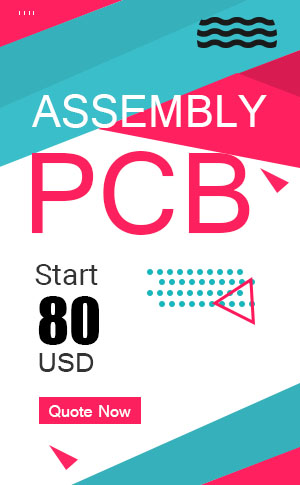General, quoting & support.
Add: Building E, No.58, Nanchang Road, Xixiang , Baoan District Shenzhen City, Guangdong, China
Tel : 0755-27348887
Fax : 0755-27349876
E-mail : svc@pcbastore.com
-
SMT Assembly: What It Is and Why It Matters
Surface mounting technology (SMT) assembly is a way to produce electronic circuits by placing components directly onto the board's surface.
2025-10-31 PCBA Store 182 -
How Rapid Prototyping PCB is Revolutionizing PCB Manufacturing in Terms of Growth
Accelerated Development Cycles: Rapid prototyping drastically reduces the time required to transition from concept to a functional prototype.
2025-10-29 PCBA Store 154 -
All About PCB Hole Types: From Through-Hole to Microvias
Four kinds of special-shaped holes and functions: Sidestep hole / Countersunk hole (Countersink hole) / Crimp hole / Hole on Pad
2025-10-30 PCBA Store 139 -
Quick Turn PCB: How to Get High-Quality Prototypes Fast
PCB Quick Turn is the principle of getting a printed circuit board (PCB) prototype and manufacturing it into the market in a shorter than usual time.
2025-10-30 PCBA Store 137 -
What is a Rigid-Flex PCB? Examples, Cost, and Uses
Rigid-flex PCBs are often multilayer, with flexible layers strategically placed so they can bend, fold, or twist while maintaining electrical connections.
2025-10-24 PCBA Store 182 -
PCB Connector Types, Functions, and Selection Tips
The primary functions of circuit board connectors are threefold: Electrical connection: Signals and power are reliably transmitted,
2025-10-21 PCBA Store 200 -
Flexible PCB Manufacturing Process: How to Fabricate FPC
How do we fabricate flexible PCBs from copper foil, PI, and adhesive to finished FPC? This article illustrates the flexible PCB fabrication process step by step
2025-10-21 PCBA Store 164 -
Countersink and Counterbore Holes in PCBs
A countersink hole is a cone-shaped hole that is notched or drilled into a PCB laminate. This tapered hole allows a flat-head socket screw head to be inserted into the drilled hole
2025-10-21 PCBA Store 165 -
Polyimide PCB Material Information (FR4 vs. Polyimide PCB)
Polyimide PCB material is lightweight and flexible and great at resisting heat and chemicals. This material is widely used in a range of electronics
2025-10-17 PCBA Store 203 -
How does double-sided SMT assembly work
Double-sided Surface Mount Technology (SMT) assembly involves placing electronic components on both sides of a printed circuit board (PCB) and soldering them in place
2025-10-16 PCBA Store 184 -
Demystifying Wireless Charger PCBA: The Heart of Cable-Free Power
At the heart of this technology lies the wireless charger PCB (Printed Circuit Board), which makes convenient, cable-free charging possible.
2025-10-15 PCBA Store 256 -
Box Build Assembly Services – Complete Guide for Electronics Manufacturing
Reliable box build assembly services in the China with end-to-end support, from wiring to final circuit board integration—fast, flexible, and quality-driven.
2025-10-14 PCBA Store 208 -
PCB Design in the Medical Industry: Our Best Rules
Some simple rules will be presented that can help the designer in the development of medical PCBs, simplifying their design, testing and maintenance.
2025-10-10 PCBA Store 249 -
Multilayer PCB Benefits and Applications
Some simple rules will be presented that can help the designer in the development of medical PCBs, simplifying their design, testing and maintenance.
2025-10-09 PCBA Store 240 -
Lead Solder vs. Lead-Free Solder for PCBs
Leaded solder is easier to use, has a lower melting point, is low cost, and causes fewer quality problems with the solder joints than lead-free solder.
2025-10-02 PCBA Store 242 -
A Comparison of Reflow Soldering and Wave Soldering
Reflow soldering uses hot air, while wave soldering uses a "wave" of solder to mass-produce PCBs.
2025-10-02 PCBA Store 241







